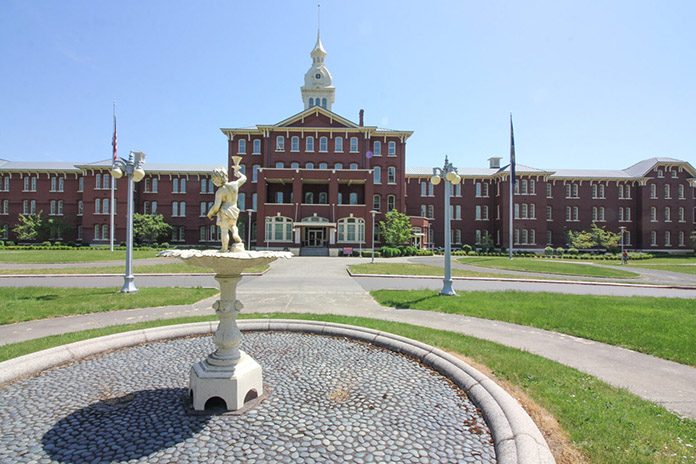
By Lynne Terry/Oregon Capital Chronicle
Oregon needs to be able to treat many more people for both mental health and addiction issues than previously estimated.
The Oregon Health Authority released a final report Thursday on its capacity to treat patients in residential facilities, and it shows the state will need more than 3,700 more beds statewide to treat about 8,100 people at a time by the fall of 2025. A draft report released in February estimated that to meet current and future demand, the state would need to be able to treat less than 3,000 more people in residential facilities.
The report said the higher number stems from a “refinement” in the analysis in collaboration with the health authority.
Residential facilities are needed for people with severe mental health or addiction issues. Such facilities include adult foster homes designed to treat a small number of people, as well as larger facilities like the Salem-based Oregon State Hospital and the Portland-based Unity Center for Behavioral Health. The Oregon State Hospital, which can treat about 700 people at a time, primarily treats people facing criminal charges, while the Unity Center is the state’s only inpatient psychiatric facility.
The state is able to treat about 4,000 people in various residential facilities, and it’s expected to add nearly 400 more beds by the fall of 2025. That means that it will only have about 55% of the beds needed by then, the report says. It was produced by Public Consulting Group, a private company located in Boston that has produced similar studies in Washington and other states.
The group said to fill this gap, the state would need to invest as much as $170 million per year over the next five years, creating approximately 650 new beds per year, the report said. But building that capacity is only part of the solution. Creating more residential beds would require hiring more staff in a field that typically pays relatively low wages and where administrators are already struggling to hire and retain employees. The report said the state needs to focus on expanding the workforce when considering any capacity expansion.
“We don’t get to choose between adding beds and adding workforce,” Ebony Clarke, the health authority’s behavioral health director, said in a statement. “We must do both in order to make real change in our behavioral health system.”
Besides adding beds and staff, the report says the state needs to improve access to mental health and addiction support services to help people stay within their communities. It calls for expanding supportive and traditional housing, such as recovery housing, which gives people a community of like-minded souls who are trying to stay clean and helps them hone their job skills, prepare resumes and land positions while working on their mental health issues.
A health authority release said state officials, Gov. Tina Kotek’s office and lawmakers will use the findings to guide future decisions on closing the behavioral health gap.
“This report provides us with critical data to inform how we prioritize the creation of more treatment beds, and it also underscores the broader understanding that we need to continue to invest in solutions that reduce the number of beds needed,” Clarke said.
Kotek directed the Oregon Health Authority to commission the study last year as part of her focus on behavioral health. State investment in behavioral health has lagged for decades, and it’s only been relatively recently that the Legislature has increased its investment, approving more than $1.5 billion over the last four years to add more beds and raise reimbursement rates so facilities can add and retain staff. But it takes time for investments to have an impact.
In the meantime, the fentanyl crisis has exploded across the state, with fatal overdoses spiking to several hundred per year. The Legislature has dialed back Measure 110, a voter-approved law that decriminalized possession of small amounts of drugs, and it has directed counties to set up new diversion programs by September when drug possession will become a misdemeanor. Lawmakers hope the new system will do more to shepherd people into treatment.
The reviewers considered the expected capacity needed through the fall of 2025 and the cost of adding enough beds across different levels of residential care. The study did not consider the state’s capacity for treating people on an outpatient basis, and Oregon lacks capacity there, too.
One of the biggest gaps is for people who need addiction. The report shows the state needs nearly 3,800 beds to treat people with an alcohol or drug addiction by the third quarter of 2025. But by then, it will only have about 1,400 beds, which means it needs to more than double the capacity to treat Oregonians struggling with addiction.
The report shows all regions need more beds, but some more than others. The Portland area and north coast has the biggest gap. It needs about 1,750 beds by the fall of 2025 to meet demand, the report says. The mid-Willamette Valley and north central coast need nearly 700, the south Willamette Valley and south central coast need about 500, while southern Oregon and the south coast need nearly 300 beds. Eastern Oregon needs about 150 beds while the Columbia River Gorge, which currently has no residential facilities offering mental health or addiction treatment, could use 50 beds by 2025 to meet demand, the report says.
This story first appeared in the Oregon Capital Chronicle.









